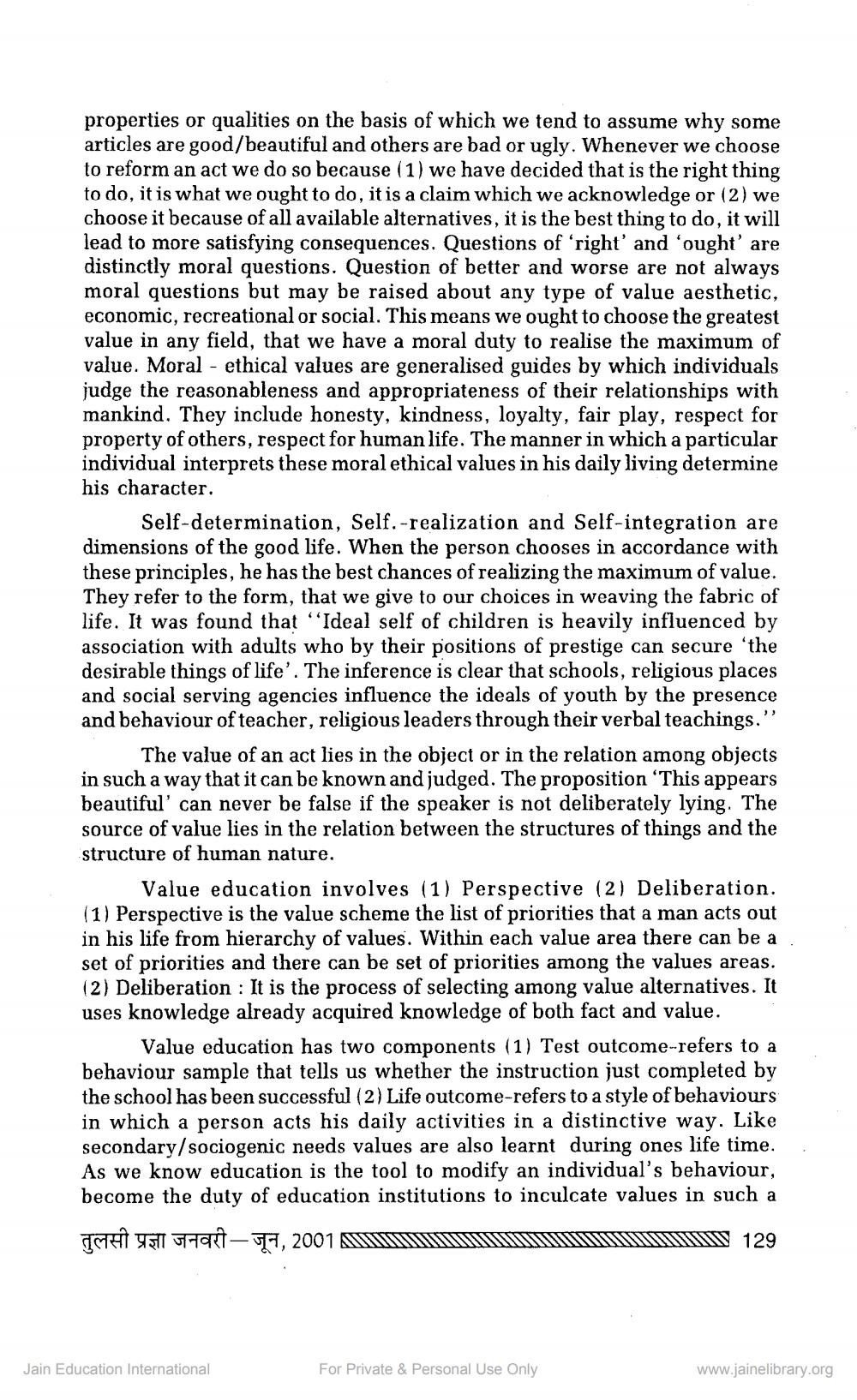________________
properties or qualities on the basis of which we tend to assume why some articles are good/beautiful and others are bad or ugly. Whenever we choose to reform an act we do so because (1) we have decided that is the right thing to do, it is what we ought to do, it is a claim which we acknowledge or (2) we choose it because of all available alternatives, it is the best thing to do, it will lead to more satisfying consequences. Questions of 'right' and 'ought' are distinctly moral questions. Question of better and worse are not always moral questions but may be raised about any type of value aesthetic, economic, recreational or social. This means we ought to choose the greatest value in any field, that we have a moral duty to realise the maximum of value. Moral - ethical values are generalised guides by which individuals judge the reasonableness and appropriateness of their relationships with mankind. They include honesty, kindness, loyalty, fair play, respect for property of others, respect for human life. The manner in which a particular individual interprets these moral ethical values in his daily living determine his character.
Self-determination, Self. -realization and Self-integration are dimensions of the good life. When the person chooses in accordance with these principles, he has the best chances of realizing the maximum of value. They refer to the form, that we give to our choices in weaving the fabric of life. It was found that "Ideal self of children is heavily influenced by association with adults who by their positions of prestige can secure 'the desirable things of life'. The inference is clear that schools, religious places and social serving agencies influence the ideals of youth by the presence and behaviour of teacher, religious leaders through their verbal teachings.
The value of an act lies in the object or in the relation among objects in such a way that it can be known and judged. The proposition 'This appears beautiful' can never be false if the speaker is not deliberately lying. The source of value lies in the relation between the structures of things and the structure of human nature.
Value education involves (1) Perspective (2) Deliberation. (1) Perspective is the value scheme the list of priorities that a man acts out in his life from hierarchy of values. Within each value area there can be a set of priorities and there can be set of priorities among the values areas. (2) Deliberation: It is the process of selecting among value alternatives. It uses knowledge already acquired knowledge of both fact and value.
Value education has two components (1) Test outcome-refers to a behaviour sample that tells us whether the instruction just completed by the school has been successful (2) Life outcome-refers to a style of behaviours in which a person acts his daily activities in a distinctive way. Like secondary/sociogenic needs values are also learnt during ones life time. As we know education is the tool to modify an individual's behaviour, become the duty of education institutions to inculcate values in such a
तुलसी प्रज्ञा जनवरी- जून,
د.
Jain Education International
2001
For Private & Personal Use Only
129
www.jainelibrary.org




